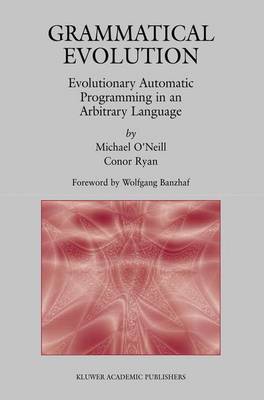Genetic Programming
2 primary works
Book 2
Automatic Re-engineering of Software Using Genetic Programming
by Conor Ryan
Published 30 November 1999
Automatic Re-engineering of Software Using Genetic Programming describes the application of Genetic Programming to a real world application area - software re-engineering in general and automatic parallelization specifically. Unlike most uses of Genetic Programming, this book evolves sequences of provable transformations rather than actual programs. It demonstrates that the benefits of this approach are twofold: first, the time required for evaluating a population is drastically reduced, and second, the transformations can subsequently be used to prove that the new program is functionally equivalent to the original.
Automatic Re-engineering of Software Using Genetic Programming shows that there are applications where it is more practical to use GP to assist with software engineering rather than to entirely replace it. It also demonstrates how the author isolated aspects of a problem that were particularly suited to GP, and used traditional software engineering techniques in those areas for which they were adequate.
Automatic Re-engineering of Software Using Genetic Programming is an excellent resource for researchers in this exciting new field.
Automatic Re-engineering of Software Using Genetic Programming shows that there are applications where it is more practical to use GP to assist with software engineering rather than to entirely replace it. It also demonstrates how the author isolated aspects of a problem that were particularly suited to GP, and used traditional software engineering techniques in those areas for which they were adequate.
Automatic Re-engineering of Software Using Genetic Programming is an excellent resource for researchers in this exciting new field.
Book 4
Grammatical Evolution: Evolutionary Automatic Programming in an Arbitrary Language provides the first comprehensive introduction to Grammatical Evolution, a novel approach to Genetic Programming that adopts principles from molecular biology in a simple and useful manner, coupled with the use of grammars to specify legal structures in a search. Grammatical Evolution's rich modularity gives a unique flexibility, making it possible to use alternative search strategies - whether evolutionary, deterministic or some other approach - and to even radically change its behavior by merely changing the grammar supplied. This approach to Genetic Programming represents a powerful new weapon in the Machine Learning toolkit that can be applied to a diverse set of problem domains.

